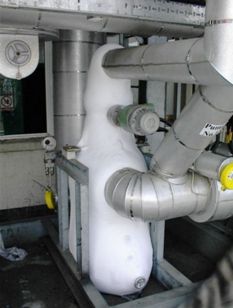Testimonials

Non-stop Pumps Help To Keep Coffee Production Flowing
When a manufacturing process involves challenging liquids handling applications, the need for pumps to operate 24 hours a day, 7 days per week, without the need for any unscheduled servicing or repair, is often an essential requirement. Pumping refrigerants at extreme temperatures is one example of a particularly challenging application, where pumps and their key components are put under significant pressure. A good example of exceptional pump performance in these types of situations is at a freeze drying plant provided by Star Refrigeration at a major food manufacturer where Nikkiso Non-Seal canned motor centrifugal pumps have been operating as part of the process of manufacturing instant coffee.
In June 2000, Michael Smith Engineers supplied six Nikkiso canned motor pumps to Star Refrigeration, with the pumps being commissioned in June 2001. Since then half of the pumps have operated almost continuously 24 hours a day, 7 days a week without any servicing, repair or breakdown. All six pumps are pumping liquid carbon dioxide, which is non-lubricating and has a viscosity of around 0.1 cP, at a temperature of -54°C. Four of the pumps are pumping 50 m3/hr at 25 metres differential head while two of them are pumping 44 m3/hr at 35 metres differential head. All the pumps are operating with a hydraulic efficiency of around 60%
Michael Smith Engineers recommended the Nikkiso BQ Reverse Circulation design for these duties, a pump which is designed to be mounted vertically with the motor over the pump ensuring quick and efficient venting of any vapour/gas in the rotor chamber. This design uses the process fluid to lubricate the sleeve bearings.
Liquid carbon dioxide from behind the pump impeller passes through the rotor chamber, lubricating between the rotating pump shaft/rotor and the stationary sleeve bearings. This process fluid flow also dissipates any heat building up in the rotor chamber. As the liquid carbon dioxide will have warmed up in the rotor chamber, there is a chance that it could flash off or boil and so the lubrication stream is taken from the rear bearing back to the vapour zone of the carbon dioxide storage vessel. The reverse circulation flow is around 1 m3/hr, less than 2% of the total process flow.
Angus Gillies, Technical Director of Star Refrigeration, commented "These are the most reliable refrigerant pumps we have ever used. Carbon dioxide often causes refrigerant pump problems due to bearing wear but the Nikkiso design has operated very well from commissioning. This is our first choice of pump for this challenging application."
Nikkiso canned motor centrifugal pumps are a hybrid between a centrifugal pump and an electric motor. The pump impeller shaft and the motor's rotor are combined into one pump shaft/rotor. This shaft/rotor is hermetically sealed from the motor stator windings and rotates within the process fluid. The canned motor design has distinct advantages over conventionally sealed and magnetically coupled centrifugal pumps. For example, they are leak-free by design and offer secondary containment as standard so in the unlikely event of a pump failure, the process fluid will be contained within the stator housing. Also, Nikkiso canned motor pumps only incorporate two bearings so reducing the number of wearing parts and helping eliminate potential alignment problems. Thanks to their compact design they occupy a very small space footprint and tend to operate very quietly, usually at less than 80dB.
The pumps are manufactured from 316 stainless steel and are fitted with carbon graphite sleeve bearings whose wearing surface has been lined with silicon carbide to a depth of approximately 4 mm. The advantages of this silicon carbide / graphite combination is that it has the wear characteristics of pure silicon carbide at a substantially reduced cost. They are fitted with Nikkiso's patented electric bearing monitor, which monitors the wear on the bearings, both axially and radially. This device uses eight sensors to continually check any deviation on the rotation of the pump's rotor and gives early indication of wear, either as a visual indication locally or remotely via a 4-20 mA signal, so pre-empting any major pump failure.
Angus Gillies, Technical Director for Star Refrigeration
Angus Gillies
